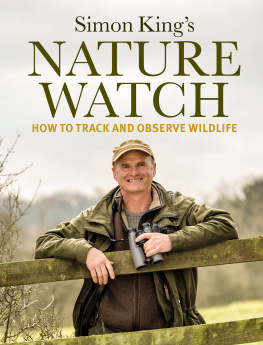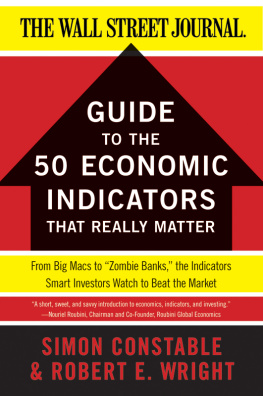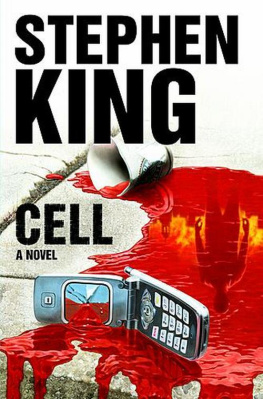Simon King - Nature Watch
Here you can read online Simon King - Nature Watch full text of the book (entire story) in english for free. Download pdf and epub, get meaning, cover and reviews about this ebook. year: 0, genre: Science. Description of the work, (preface) as well as reviews are available. Best literature library LitArk.com created for fans of good reading and offers a wide selection of genres:
Romance novel
Science fiction
Adventure
Detective
Science
History
Home and family
Prose
Art
Politics
Computer
Non-fiction
Religion
Business
Children
Humor
Choose a favorite category and find really read worthwhile books. Enjoy immersion in the world of imagination, feel the emotions of the characters or learn something new for yourself, make an fascinating discovery.
- Book:Nature Watch
- Author:
- Genre:
- Year:0
- Rating:4 / 5
- Favourites:Add to favourites
- Your mark:
- 80
- 1
- 2
- 3
- 4
- 5
Nature Watch: summary, description and annotation
We offer to read an annotation, description, summary or preface (depends on what the author of the book "Nature Watch" wrote himself). If you haven't found the necessary information about the book — write in the comments, we will try to find it.
Nature Watch — read online for free the complete book (whole text) full work
Below is the text of the book, divided by pages. System saving the place of the last page read, allows you to conveniently read the book "Nature Watch" online for free, without having to search again every time where you left off. Put a bookmark, and you can go to the page where you finished reading at any time.
Font size:
Interval:
Bookmark:


In fondest memory of my friend and mentor, Mike Kendall. He was my key-master.
Publishing Director: Sarah Lavelle
Creative Director: Helen Lewis
Editor: Jinny Johnson
Design: Smith & Gilmour
Production: Tom Moore, Vincent Smith
First published in 2016 by
Quadrille Publishing
Pentagon House
5254 Southwark Street
London SE1 1UN
www.quadrille.co.uk
Quadrille is an imprint of Hardie Grant
www.hardiegrant.com.au
Text Simon King 2016
Photography Simon King 2016
Design and layout Quadrille Publishing 2016
The rights of the author have been asserted. All rights reserved. No part of this book shall be reproduced, stored in a retrieval system, or transmitted by any means electronic, mechanical, photocopying, recording, or otherwise without written permission from the publisher.
Cataloguing in Publication Data: a catalogue record for this book is available from the British Library.
eISBN: 978 1 84949 924 8
PICTURE CREDITS
Photographs: all photos by Simon King except for the following:
Phil Mumby: (top right)
Charlie Nash:
Charlie Phillips:
Marguerite Smits van Oyen:
Sam Stewart:
Chris Terry:
Alex Tivenan:
Animal illustrations: Jake Davis
Footprint illustrations: Simon King
CONTENTS
Equipment recommended for wildlife watching, including binoculars, spotting scopes, tripods, cameras and clothing.
Learn how to hone your senses and how to move and settle in the landscape with minimal disturbance.
Track, sign and watching tips for British and European animals.

From the earliest age I have had a passionate interest in wildlife. My desire to know more about my natural neighbours drew me to the bottom of the garden looking for insects and toads, and, when I was old enough, to the woods and rivers around my childhood home in southwest England to watch kingfishers, sparrowhawks, foxes and more.
Since then, in my work as a naturalist and wildlife film-maker, I have encountered a phenomenal variety of creatures, from the big cats of Kenya to the killer whales of Patagonia. But it is in my home-patch of the UK that I have invested the greatest time and focus on learning the ways of the wild.
Over the past five decades I have tried to develop methods to help me close the gap between myself and other creatures. I have strived to learn their language, to read the clues they leave behind and to remain undetected so that I can observe them without affecting their behaviour.
This book is a distillation of some of that knowledge. It is not an identification guide to the wildlife of Britain and Europe, although many of the pictures of the animals described should help the reader identify them in the field.
Instead the book is designed to be a key a key to the door of your wild neighbours. With its help, you should be able to tell who has been visiting, and digging up, your garden, and which animal left the track or the poo on the path. You will learn how to move, look and listen, even how to smell whats around you, with fresh, heightened senses. And in so doing, the door to the wild world will slowly swing open and you will find yourself surrounded by wonder, beauty, drama and pathos.
If a species has been included, it is because I believe that it leaves signs that may help with identifying its whereabouts, and/or there are techniques you can deploy that may help you observe the animal in the wild. Limitations of space, as well as my desire to describe only species of which I have firsthand knowledge, mean that some animals that may warrant inclusion have been omitted, and for this I apologise. I am always learning and aiming to fill the gaps.
Sense graphics
For many species, I have rated their senses on a scale of 110. I have only included this information for animals that have the potential to be adversely affected by the presence of a human, and frequently use their senses to smell, hear or see a human. With this in mind, the number rating reflects the importance of each sense when considering how you should go about watching that animal.
Rabbits, for instance, have a keen sense of smell and can tell each other apart by scent alone. But they are unlikely to be bothered by the smell of a human sitting upwind of them, so this sense rates only a 3 on their scale. If a rabbit hears or sees a human, it is likely to run for cover; so the rabbits senses of hearing and sight, both of which are keen, are given a rating of 8.
Finally, may I implore you to show the greatest respect to the creatures you are trying to observe. With time, patience and care you will be able to enter their world without causing a ripple and that is a truly beautiful experience. I wish you good luck, good light and a favourable wind.
Peace and light, Simon King
OPTICS
BINOCULARS
If there is one essential tool for the field naturalist it is a pair of binoculars. They all aim to do a similar job (bring objects you are looking at into close detail), but they have vastly different specifications and levels of quality.
The first thing to bear in mind is that bigger is not better. The claim for a pair of binoculars might be that they magnify an object by 20 or 30 times, but that does not make them the best pair to purchase.
There are three main types of binoculars: Porro prism and roof prism in the full-size models, and a range of compact models.
As the name suggests, the Porro and roof designs are distinguished by their configuration of internal prisms. The roof prism has a straight barrel design, with the exit pupil (the lens nearest the eye) in line with the object lens (the big lens furthest from the eye). Porro prism binoculars have the offset form of the typical binocular in which the object lens is set wider than the exit pupil.
All top-of-the-range sports optics binoculars have the roof prism as their leading design. Indeed, most naturalists now choose roof prism over Porro prism, citing comfort and ease of use as driving factors in their choice. Both types work equally well and much of the decision on what style you go for comes down to personal choice based on feel and, of course, price.
Compact binoculars are designed for occasional use when you might not be able to carry a full-size pair of binoculars. They generally suffer from low light transmission due to their small object lenses.
Specification
When choosing a pair of binoculars for watching wildlife, the following are the key features to look out for.
Magnification
I find the ideal magnification for wildlife watching to be between 7x and 10x. Any less and you will struggle to pick out the detail necessary for bird identification or well-camouflaged mammals; any more and you will find it hard to hand-hold your binoculars steady enough for a clear view.
Generally speaking, the lower the magnification, the brighter and wider the image. There are exceptions with a few top-of-the-range optics, which manage to achieve astonishing brightness and field of view while maintaining higher magnifications.
Contrast and colour
When testing optics, try comparing inexpensive models with the most expensive. While they may appear superficially similar, you will notice key differences in the image, and much of this comes down to the quality of the optics housed in the unit. Optical glass is coated to address the problems created by refraction of light, specifically the colour spectrum. Poor optics will reveal colour fringing, where the image appears to have rainbow edges on all but the very centre of the view. The highest quality optics have an image that appears pin-sharp and evenly focused across the majority of the field of view, colours that remain true to life, and bright and high light transmission qualities in low light conditions.
Font size:
Interval:
Bookmark:
Similar books «Nature Watch»
Look at similar books to Nature Watch. We have selected literature similar in name and meaning in the hope of providing readers with more options to find new, interesting, not yet read works.
Discussion, reviews of the book Nature Watch and just readers' own opinions. Leave your comments, write what you think about the work, its meaning or the main characters. Specify what exactly you liked and what you didn't like, and why you think so.









